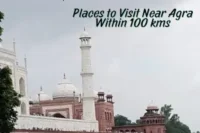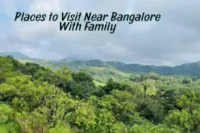Ultimate Guide to Adventure Tourism in India: Activities & Places
Published: 3 Jun 2025
Love a little thrill in your travels? Then adventure tourism in India is just what you need!
India is not just about temples and food, it’s also full of exciting places where you can hike high mountains, dive deep into the sea or fly above hills. From the snowy slopes of Gulmarg to the wild rivers of Rishikesh, there’s an adventure waiting for everyone.
In this guide, I will explore the best activities, top places and helpful tips for a safe and fun adventure in India. Whether you are a first-timer or someone who lives for adrenaline, this post will help you plan an unforgettable trip.

Popular Adventure Activities in India
India is full of fun and thrilling experiences for adventure lovers. From the mountains in the north to the seas in the south, you will find exciting activities to try. Here are the most popular ones:
1. Trekking and Hiking
Trekking is perfect if you enjoy nature, peace and a little challenge. India has trails for both beginners and experienced hikers.
- Triund Trek (Himachal Pradesh): Short, scenic and beginner-friendly. It offers a clear view of the Dhauladhar range.
- Valley of Flowers (Uttarakhand): A magical trek through a UNESCO World Heritage site, full of colorful wildflowers.
- Markha Valley (Ladakh): A long and high altitude trek, ideal for those who want a real adventure in a remote landscape.
✅ Tip: Start with easy treks if you are new. Wear good hiking shoes, pack light and always check the weather.
You May Want To Read: Top 10 Tourist Places to Visit in India
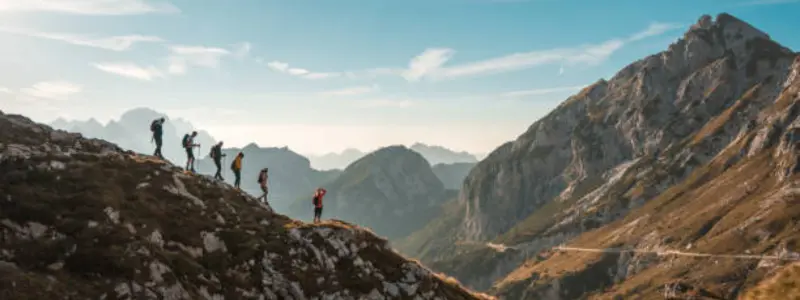
2. River Rafting
If you enjoy water and team fun, river rafting is a must-try. It’s fast, exciting and safe when done with the right group.
- Rishikesh (Uttarakhand): India’s rafting capital. The Ganga river offers different rafting levels for beginners and pros.
- Zanskar River (Ladakh): Wild and freezing cold, this one is for brave hearts.
- Teesta River (Sikkim): Surrounded by green hills, it’s perfect for adventure with nature.
✅ Example: Many college groups and office teams go rafting in Rishikesh for fun, bonding and an energy boost.

3. Paragliding and Skydiving
Flying through the sky is a dream and in India, you can make it real. These air sports offer great views and unforgettable thrills.
- Bir Billing (Himachal Pradesh): One of the best paragliding spots in the world.
- Goa: Great for parasailing over the beach with colorful parachutes.
- Mysore (Karnataka): A popular place to try skydiving with trained experts.
✅ Tip: Always go with licensed adventure companies and avoid flying in bad weather.
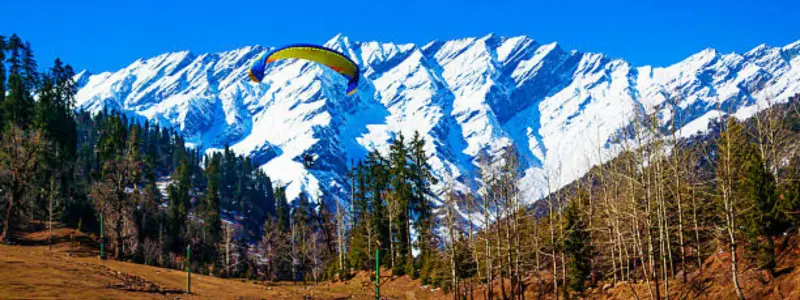
4. Wildlife Safaris and Camping
For a calm and wild adventure, visit India’s forests and national parks. See tigers, elephants, deer and rare birds.
- Jim Corbett National Park (Uttarakhand): Oldest park in India, known for tigers and river safaris.
- Ranthambore (Rajasthan): A mix of jungle and old forts, a great place to spot big cats.
- Kanha and Bandipur: Good for camping with jungle views.
✅ Tip: Book safaris in advance. Wear earthy colored clothes and follow the guide’s rules for safety.

5. Water Sports and Scuba Diving
Love water? India has many beach spots for action and fun. From surfing to diving, the choices are endless.
- Goa: Jet skiing, kayaking, parasailing—this beach paradise has it all.
- Andaman Islands (Havelock Island): Scuba dive to see coral reefs and colorful fish.
- Kovalam (Kerala): A good spot for learning how to surf in warm waters.
✅ Example: Couples love scuba diving in the Andamans. It’s safe, romantic and guided by professionals.

Suggested Article: Best Time to Visit Ayodhya
6. Winter Sports
If snow makes you happy, head to India’s winter wonderlands. Skiing, snowboarding and snow treks are waiting for you.
- Gulmarg (Jammu & Kashmir): Best place for skiing with powder snow and ski schools.
- Auli (Uttarakhand): Great for both beginners and pros. It’s calm, clean and very scenic.
- Spiti and Manali: Offer winter treks and snow camping for the bold hearted personalities.
✅ Tip: Wear layers, rent quality gear and take it slow if you are new to snow sports.

Top Adventure Tourism Destinations in India
India has something for every kind of thrill-seeker. Whether you love water, snow, forests or heights, this country offers adventure in every corner. Below are the best destinations, what you can do there and tips to make the most of your trip.
1. Rishikesh, Uttarakhand
Famous for: River rafting, bungee jumping, cliff jumping, ziplining
Rishikesh is a perfect mix of adventure and spirituality. The fast-flowing Ganga River is great for rafting and the cliffs nearby are made for jumping! It’s also home to India’s highest bungee jumping platform. After the thrills, you can relax with yoga or by the riverbank.
- Best Time to Visit: September to June
- Ideal Duration: 2–3 days
- How to Reach: Nearest airport is Dehradun (Jolly Grant). From there, take a cab or bus (around 20 km).
✅ Example: College groups often choose Rishikesh for rafting + camping weekends.
2. Manali & Solang Valley, Himachal Pradesh
Famous for: Paragliding, skiing, river crossing, zorbing
Manali is full of natural beauty and thrill. Solang Valley nearby is the adventure hub. In summer, go paragliding and zorbing. In winter, try skiing and snowboarding.
- Best Time to Visit: October to February for snow, March to June for other activities
- Ideal Duration: 3–5 days
- How to Reach: Nearest airport is Kullu (Bhuntar). Regular buses from Delhi and Chandigarh.
✅ Tip: Try the ropeway in Solang, it gives amazing views of snowy peaks.
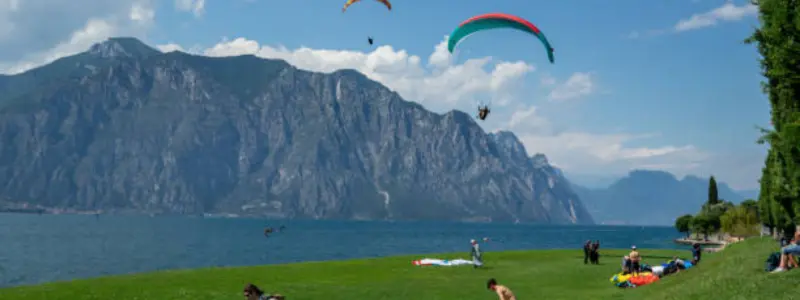
3. Goa
Famous for: Water sports like parasailing, jet skiing, banana boat rides, scuba diving
Goa’s fun vibes make it one of the top beach adventure spots. North Goa is popular for energetic water activities, while South Goa is calmer and good for diving or kayaking.
- Best Time to Visit: October to March
- Ideal Duration: 3–5 days
- How to Reach: Goa has two major airports: Dabolim and Mopa.
✅ Example: Many couples try scuba diving in Grande Island which is great for beginners!
4. Jaisalmer, Rajasthan
Famous for: Camel safari, desert camping, jeep safari, quad biking
Jaisalmer is called the Golden City for a reason. The sand dunes glow at sunset! You can ride camels, enjoy Rajasthani music in tents and try off-road jeep adventures on sand dunes. I love the off-road jeep adventure, it gives swag vibes always.
- Best Time to Visit: October to February
- Ideal Duration: 2–3 days
- How to Reach: Nearest airport is Jodhpur. From there, drive or take a train to Jaisalmer (around 5–6 hours).
✅ Tip: Book a desert camp with cultural shows and local food for the full experience.
5. Auli, Uttarakhand
Famous for: Skiing, snowboarding, snow trekking, cable car rides
Auli is a dream come true for snow lovers. The ski slopes are gentle for beginners and exciting for experts. You can also go on snow treks or enjoy a 4-km cable car ride with jaw-dropping views.
- Best Time to Visit: December to March for snow
- Ideal Duration: 2–3 days
- How to Reach: Nearest airport is Dehradun. From there, drive to Joshimath and take a ropeway to Auli.
✅ Tip: Carry warm clothes and wear waterproof snow boots.
6. Ladakh
Famous for: High-altitude trekking, motorbiking, mountain passes, river rafting
Ladakh is for true adventure lovers. Ride a bike through Khardung La, trek in Markha Valley or raft in the icy Zanskar River. It’s peaceful, stunning and unlike any other place in India.
- Best Time to Visit: May to September
- Ideal Duration: 5–7 days
- How to Reach: Fly to Leh airport. No trains but roads from Manali or Srinagar offer scenic drives.
✅ Example: Groups of bikers often do the famous Manali–Leh road trip every year.
How to Plan an Adventure Trip in India
Planning is key to having a fun and safe adventure. Whether you are going for a short weekend trip or a long expedition, here’s how to make your journey easy and exciting.
1. Choose the Right Destination
Pick a place based on your interests, time and season.
- Love water sports? Try Goa or Rishikesh.
- Want snow? Head to Auli or Manali.
- Like offbeat places? Try Ladakh or Ziro Valley.
🔍 Tip: Check the weather forecast. Monsoon or winter might affect certain activities.
2. Pack the Essentials
Don’t overpack but don’t miss the basics either!
- Adventure gear (gloves, jackets, shoes)
- Power bank, torch, reusable water bottle
- First-aid kit and personal medicines
- ID cards and permits (especially for places like Ladakh or Northeast India)
✅ Tip: Use a waterproof backpack during monsoon or river trips.
3. Budget Your Trip
Set a daily budget for food, stay and transport.
- Backpacker hostels are cheaper and fun for solo travelers
- Group bookings often offer discounts
- Keep cash for small towns where cards don’t work
✅ Tip: Use apps to track expenses and find local deals.

4. Stay Safe
Adventure should be fun, not risky.
- Follow expert instructions during activities
- Avoid trying dangerous stunts on your own
- Carry emergency contacts and travel insurance if possible
✅ Tip: Share your travel plan with someone back home.
5. Plan Transport & Stay in Advance
Book your flights, trains or buses early, especially in peak seasons.
- Use Google Maps and local apps to plan routes
- Try local homestays or eco-resorts for a better experience
✅ Tip: Read reviews before booking adventure camps or hostels.
Adventure Trip Packing Guide for India
Packing smart helps you enjoy your trip without stress. Here’s a clear list of what to carry for any adventure trip in India. You can adjust it based on the place and weather.
A. Clothing Essentials
Pack light, comfy clothes that match the weather.
- Quick-dry T-shirts and track pants
- Warm jacket for mountains or cold places
- Raincoat or poncho for monsoon or river trips
- Extra socks and underwear
- Swimwear for water sports
- Hat or cap and sunglasses
- Scarf or muffler for dust or cold winds

B. Footwear
The right shoes keep your feet safe and comfortable.
- Hiking shoes with good grip
- Flip flops or sandals for casual wear
- Waterproof boots for snow or rain
C. Gear & Tools
Keep these handy to stay prepared.
- Small backpack or daypack
- Headlamp or flashlight
- Power bank and phone charger
- Reusable water bottle
- Travel towel and wet wipes
- Sunglasses with UV protection
- Lock for your bag
D. Toiletries & Personal Items
Stay clean and fresh during your journey.
- Toothbrush, toothpaste, soap, shampoo
- Sunscreen and lip balm
- Deodorant
- Toilet paper or tissue
- Hand sanitizer
- Comb or hairbrush
E. First-Aid & Health Items
Don’t forget safety and medicine.
- Band-aids, antiseptic cream
- Pain relievers and basic fever/cold meds
- Motion sickness tablets for hilly roads
- Any personal medicine
- Insect repellent
F. Travel Documents & Extras
Carry a small folder or pouch for important stuff.
- Government ID (Aadhaar, PAN or passport)
- Travel tickets or booking confirmations
- Emergency contact list
- Some cash and one card
- Guidebook or small notebook
Real-Life Stories and Examples
Adventure tourism in India has changed the way many travelers explore the country. These short stories and quotes show how thrilling experiences can lead to unforgettable memories.
Rishikesh: Conquering the Rapids
Traveler: Deepak Sharma
Experience: Deepak recounts his exhilarating white-water rafting adventure in Rishikesh. He describes the initial nervousness, the thrill of navigating the rapids and the sense of accomplishment upon completing the journey. His detailed narrative captures the essence of confronting fears and embracing adventure.
Full Story: My First Experience of White Water Rafting in Rishikesh Deepak sharma writes
Spiti Valley: Camping Under the Stars
Traveler: Suri Mahika
Experience: Suri shares her unforgettable camping experience in Spiti Valley. She highlights the serene environment, clear skies and the unique charm of camping in remote locations like Chandratal Lake and Kaza. Her story emphasizes the tranquility and connection with nature that Spiti offers.
Full Story: Camping in Spiti Valley: An Unforgettable ExperienceMedium
Bir Billing: Soaring Through the Skies
Traveler: Global Gallivanting
Experience: The traveler describes the thrill of paragliding in Bir Billing, one of the world’s top paragliding sites. She details the preparation, the flight experience and the breathtaking views of the Dhauladhar mountain range, capturing the essence of flying like a bird.
Full Story: Flying High: My Experience of Paragliding in Bir Billing, IndiaGlobal Gallivanting Travel Blog
Kedarkantha: A Transformative Trek
Traveler: Tanha Dil
Experience: The traveler shares insights from their first snow Himalayan trek to Kedarkantha. They discuss the challenges faced, the importance of physical fitness and the rewarding feeling of reaching the summit. The narrative serves as a guide and inspiration for aspiring trekkers.
Full Story: Kedarkantha Trek – First-Hand Experience on First Snow Himalayan TrekMeenakshi Gupta
These firsthand accounts provide valuable insights and inspiration for anyone considering adventure tourism in India. Each story highlights the unique experiences and personal growth that come with embracing adventure.
Conclusion
Adventure tourism in India offers more than just excitement. It helps you discover new places, push your limits and create memories that last forever. From rafting wild rivers to soaring through mountain skies, every adventure brings a fresh story to tell.
Are you ready to try something new? Pack your bags, follow the safety tips and jump into India’s amazing adventure spots. Whether you are a beginner or an expert, there’s a perfect challenge waiting for you.
Related Queries
Here are frequently asked questions about adventure tourism in India:
Adventure activity costs in India vary widely with rafting starting around ₹1,000-2,500, paragliding ₹2,000-3,500 and multi-day treks ₹5,000-20,000 depending on duration and location. Major destinations like Rishikesh and Manali often have competitive pricing due to multiple operators while remote locations may charge premium rates. Budget travelers can save by booking directly with operators rather than through hotels or travel agencies.
Yes, areas like Ladakh, Sikkim, Arunachal Pradesh and regions near international borders require Inner Line Permits or Protected Area Permits for non-locals. Certain wildlife areas need forest department permissions for camping or trekking activities. Most reputable adventure companies will handle permit arrangements for you if you book activities through them.
Most adventure activities offer options for beginners that require only basic fitness and no prior experience. Activities like easy treks, beginner rafting and tandem paragliding are designed to be accessible to most people in reasonable health. However, high-altitude adventures, advanced treks and extreme sports do require better fitness levels and sometimes prior experience.
Monsoon typically runs from June to September, varying slightly across regions and affects adventure tourism significantly. Most high altitude Himalayan treks, paragliding sites and certain wildlife sanctuaries close during this period due to safety concerns. However, monsoon creates excellent conditions for white water rafting in places like Rishikesh and makes Western Ghats treks especially beautiful with flowing waterfalls.
Most adventure activities have minimum age requirements ranging from 12-18 years depending on the risk level involved. Water sports like kayaking and parasailing typically allow younger participants 10+ years with parental consent, while high-altitude trekking and extreme sports often have minimum ages of 16-18 years. Seniors should consult with operators about any upper age limitations which are typically flexible but may require medical clearance.
Reputable adventure operators in popular Indian destinations generally follow international safety standards and use certified equipment. Always check for proper licensing, safety certifications and positive reviews before booking any adventure activity. Budget operators may cut corners on safety, so it’s worth paying more for operators with proven safety records and professional guides.
Purchase travel insurance that specifically covers adventure sports and high altitude activities, as standard travel policies often exclude these. Look for policies covering emergency helicopter evacuation which is crucial for remote treks and mountain adventures. Most comprehensive adventure policies cost between ₹1,000-3,000 for a week long trip, depending on the activities you plan to undertake.
Many family-friendly adventure options exist including wildlife safaris, gentle rafting (Grade I-II), short day treks and camping experiences. Destinations like Munnar, Jim Corbett and areas around Shimla offer numerous kid-friendly adventure activities with appropriate safety measures. Consider visiting adventure camps specifically designed for families where activities are tailored to different age groups.
Popular activities in peak season like paragliding in Bir Billing during October should be booked 2-3 months in advance for guaranteed spots. Most regular activities can be booked 2-4 weeks ahead, though last minute bookings are often possible during weekdays or off-season.
For Himalayan adventure destinations, shared taxis or private vehicles offer flexibility to stop at viewpoints and adapt to changing weather conditions. Domestic flights can save time when covering large distances between adventure hubs like Goa to Ladakh or Kerala to Uttarakhand. For budget travelers, overnight buses and trains provide economical options, though they may require additional planning around arrival times.

- Be Respectful
- Stay Relevant
- Stay Positive
- True Feedback
- Encourage Discussion
- Avoid Spamming
- No Fake News
- Don't Copy-Paste
- No Personal Attacks



- Be Respectful
- Stay Relevant
- Stay Positive
- True Feedback
- Encourage Discussion
- Avoid Spamming
- No Fake News
- Don't Copy-Paste
- No Personal Attacks


